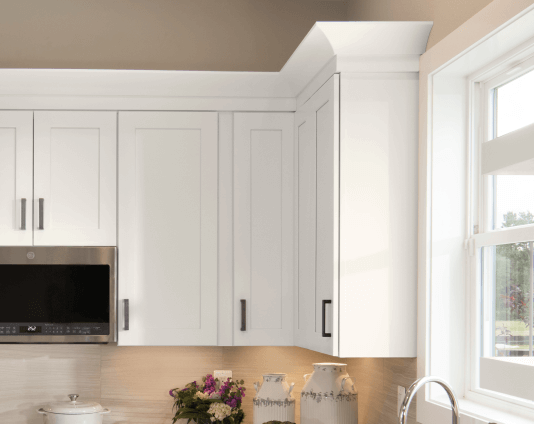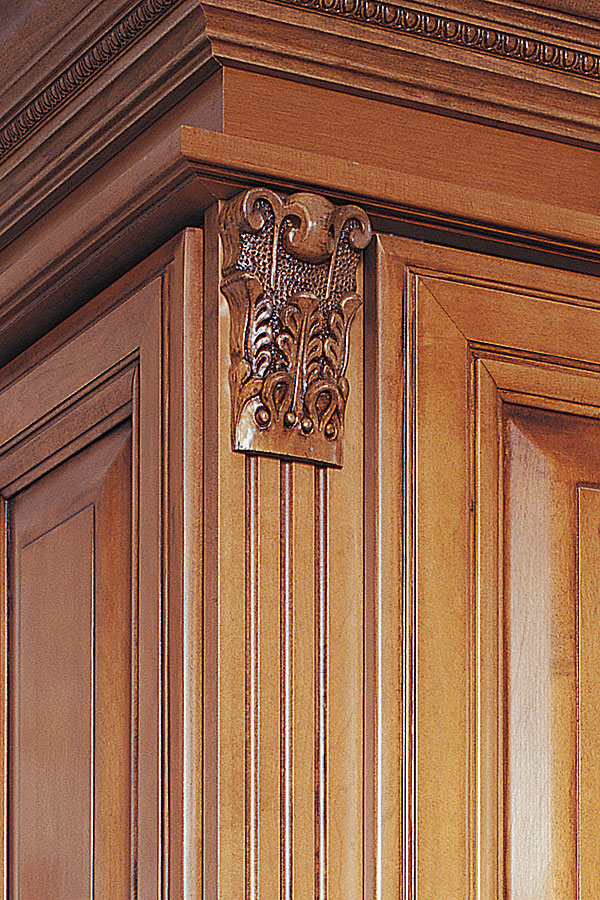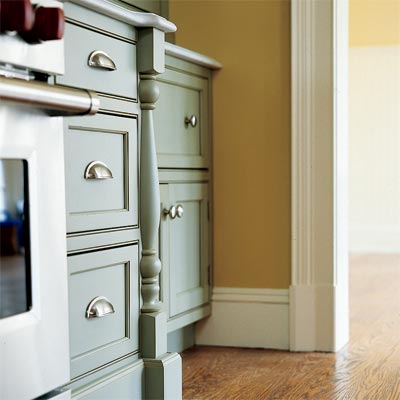Decorative cabinet trim may seem like a small detail in your home decor, but it can dramatically alter the look and feel of your kitchen, bathroom, or any cabinetry in your home. Having personally experimented with various types and styles of trim, I’m excited to share my insights, tips, and tricks to help you choose the perfect decorative trim for your home.
What is Decorative Cabinet Trim?
Decorative cabinet trim consists of moldings and other architectural details that are applied to cabinets to enhance their appearance. This can include crown moldings, baseboards, and various decorative accents that complement the overall design of your space.
Common Types of Decorative Cabinet Trim
- Crown Molding: Often placed at the top of cabinets, crown molding adds elegance and can make ceilings appear higher.
- Base Molding: Used at the bottom of cabinets to provide a finished look and protect from damage.
- Chair Rail: A molding that runs horizontally around a room, which creates visual interest and can act as a divider for paint colors.
- Panel Molding: Used to create the appearance of panels on flat cabinet doors, adding depth and sophistication.

Why Use Decorative Cabinet Trim?
The addition of decorative cabinet trim is not just about aesthetics—it also serves several functional purposes. Here are some reasons to consider incorporating trim into your cabinetry:

- Enhanced Visual Appeal: Trim can enhance the overall look of cabinetry, making it appear more custom and luxurious.
- Protection: Moldings can protect the edges of your cabinets from nicks and damage.
- Design Cohesion: Decorative trim can tie together different design elements in your space, creating a more cohesive look.
Choosing the Right Style of Decorative Cabinet Trim

There are numerous styles of cabinet trim available, and selecting the right one depends on your personal taste and the design of your space. Here are a few popular styles:
Traditional Style Cabinet Trim
.jpg)
Traditional styles often feature ornate details and rich wood finishes. This style works well in historic homes or those aiming for a classic look.
Examples of Traditional Styles
- Curved crown moldings
- Scrollwork and decorative brackets

Modern Style Cabinet Trim
For a sleek, contemporary appearance, modern cabinet trim typically features clean lines and minimal embellishments.

Examples of Modern Styles
- Flat panel moldings
- Simple linear crown moldings
Rustic Style Cabinet Trim

Rustic designs embrace natural materials and textures, often using reclaimed wood or distressed finishes.
Examples of Rustic Styles
- Beaded board trim
- Rough-hewn moldings
Comparison Table of Trim Styles
| Trim Style | Characteristics | Best For |
|---|---|---|
| Traditional | Ornate, detailed | Classic and historical homes |
| Modern | Clean lines, minimal detail | Contemporary and minimalist designs |
| Rustic | Natural, textured finishes | Farmhouse and cottage styles |
Materials Used for Cabinet Trim
The material you choose for your cabinet trim will greatly affect the final look and durability. Here are some common materials:
Wood
Wood is a traditional choice that offers versatility in style and finish. However, it can be more expensive and requires regular maintenance.
MDF (Medium Density Fiberboard)
MDF is a budget-friendly option that can be easily painted and shaped, making it a popular choice for trim work.
Polyurethane
This synthetic material is lightweight, moisture-resistant, and can mimic the look of wood while being easier to maintain.
Installation Tips for Decorative Cabinet Trim
Installing cabinet trim can be a DIY project or a job for professionals. If you choose to tackle it yourself, here are some tips:
- Measure Twice, Cut Once: Ensure your measurements are accurate to avoid wasting materials.
- Use the Right Tools: A miter saw, nail gun, and level are essential for a clean finish.
- Choose the Right Adhesive: Depending on your trim material, select an adhesive that provides a strong bond.
Common Installation Mistakes to Avoid
- Not using a level can result in uneven trim.
- Forgetting to pre-drill holes for nails can lead to splitting.
- Neglecting to fill nail holes can leave your trim looking unkempt.
Maintenance of Decorative Cabinet Trim
Keeping your decorative trim looking fresh is key to maintaining your home’s aesthetics. Here are some maintenance tips:
- Regular Dusting: Use a soft cloth to dust off your trim regularly.
- Clean Stains Immediately: Use a mild cleaner suitable for your trim material to clean any spills or stains.
- Touch Up Paint: If you notice chipped paint, touch it up quickly to avoid further damage.
Pros and Cons of Decorative Cabinet Trim
Pros
- Enhances the overall look of cabinetry
- Adds value to your home
- Protects cabinetry from damage
- Can be a DIY project
Cons
- Can be costly depending on materials
- Requires maintenance
- Installation may be complex for beginners
FAQs about Decorative Cabinet Trim
What is the best type of trim for kitchen cabinets?
The best type of trim for kitchen cabinets typically depends on your kitchen’s style. Crown moldings are popular for a classic look, while flat panel moldings suit modern kitchens well.
Can I install decorative trim myself?
Yes, many homeowners successfully install decorative trim themselves with the right tools and instructions. It’s important to research and plan your installation beforehand.
How do I clean decorative cabinet trim?
Use a soft, damp cloth and a mild cleaner to wipe down your trim regularly. Avoid harsh chemicals that could damage the finish.
Is decorative cabinet trim worth it?
Yes, decorative cabinet trim can enhance the aesthetic appeal of your home and potentially increase property value, making it a worthwhile investment.
Conclusion
Decorative cabinet trim is much more than just a design element. It’s an opportunity to infuse your personal style into your home while adding functionality and value. Whether you opt for traditional, modern, or rustic styles, the right trim can transform your cabinetry from ordinary to extraordinary. My journey into the world of decorative trim has shown me that the details matter, and with the right choices, your home can truly reflect your personality and taste. Happy decorating!